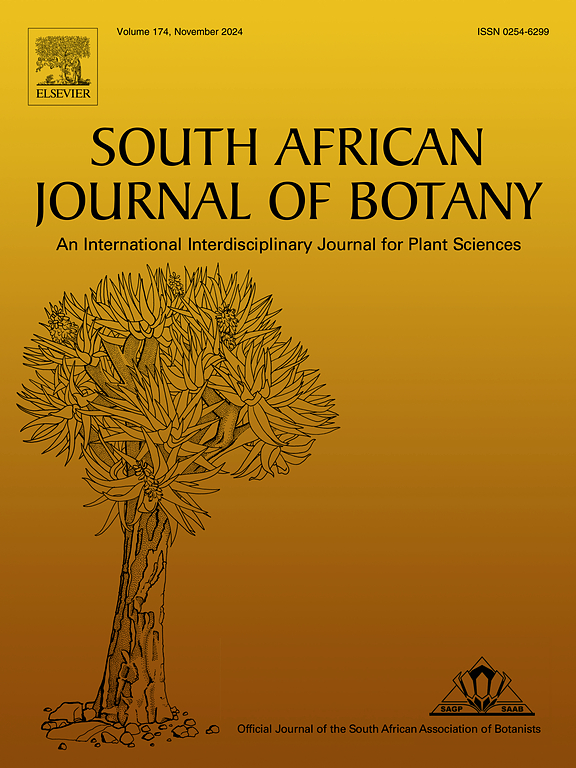A sustainable ultrasound-assisted extraction approach for baobab (Adansonia digitata L.) fruit: Optimization, bioactive contents, cytotoxicity, and antibacterial activity
IF 2.7
3区 生物学
Q2 PLANT SCIENCES
引用次数: 0
Abstract
The interest of consumers in baobab products has been growing due to the exceptional phytochemical profile, bioactivity, and health effects of baobab. The aim of this study was to determine the optimum conditions for ultrasound-assisted extraction (UAE) to obtain bioactive-rich baobab fruit extracts using water in the context of green and sustainable chemistry. The ultrasound amplitude (40–100 %), organic baobab fruit pulp (OBFP) concentration (5–15 %, w/v), and ultrasonication time (5–15 min) were selected as independent variables. The predicted optimal conditions were 92.72 % ultrasound amplitude, 11.49 % OBFP, and 15 min of ultrasonication. Under these extraction conditions, total phenolics content (TPC), total flavonoids content (TFC), ascorbic acid content (AAC), DPPH-radical scavenging activity, and CIE a* and b* values were 2432.85 mg GAE/100 g, 7412.49 mg CE/100 g, 229.17 mg/100 g, 35.47 %, 4.85, and 14.78, respectively. The growth of Escherichia coli and Staphylococcus aureus was inhibited by the optimized extract at 6.25 mg/mL as the minimum inhibition concentration (MIC). The extract reduced the cell viability in MDA-MB-231 human breast cancer cells in a dose- and time-dependent manner, while it did not have toxicity against HEK293 human embryonic kidney cells. The obtained extract can be used as a natural thickener in various foods where high viscosity is desired.
猴面包树果实的超声辅助提取方法:优化、生物活性含量、细胞毒性和抗菌活性
由于猴面包树独特的植物化学特征、生物活性和健康效应,消费者对猴面包树产品的兴趣一直在增长。本研究的目的是在绿色化学和可持续化学的背景下,确定超声辅助提取(UAE)获得富含生物活性的猴面包树果实提取物的最佳工艺条件。以超声振幅(40 ~ 100%)、有机猴面包树果肉(OBFP)浓度(5 ~ 15%,w/v)、超声时间(5 ~ 15 min)为自变量。超声振幅为92.72%,OBFP为11.49%,超声时间为15 min。在此提取条件下,总酚含量(TPC)为2432.85 mg GAE/100 g,总黄酮含量(TFC)为7412.49 mg CE/100 g,抗坏血酸含量(AAC)为229.17 mg CE/100 g, CIE a*和b*值分别为35.47%、4.85和14.78。优化后的提取物对大肠杆菌和金黄色葡萄球菌的生长均有抑制作用,最低抑制浓度为6.25 mg/mL。该提取物可降低MDA-MB-231人乳腺癌细胞的细胞活力,且呈剂量和时间依赖性,但对HEK293人胚胎肾细胞无毒性。所获得的提取物可作为天然增稠剂用于各种需要高粘度的食品中。
本文章由计算机程序翻译,如有差异,请以英文原文为准。
求助全文
约1分钟内获得全文
求助全文
来源期刊

South African Journal of Botany
生物-植物科学
CiteScore
5.20
自引率
9.70%
发文量
709
审稿时长
61 days
期刊介绍:
The South African Journal of Botany publishes original papers that deal with the classification, biodiversity, morphology, physiology, molecular biology, ecology, biotechnology, ethnobotany and other botanically related aspects of species that are of importance to southern Africa. Manuscripts dealing with significant new findings on other species of the world and general botanical principles will also be considered and are encouraged.
 求助内容:
求助内容: 应助结果提醒方式:
应助结果提醒方式:


